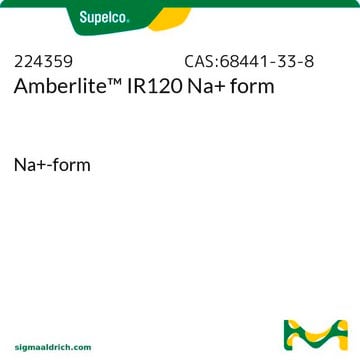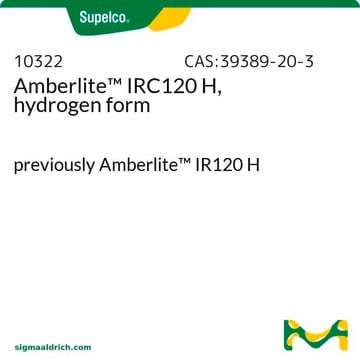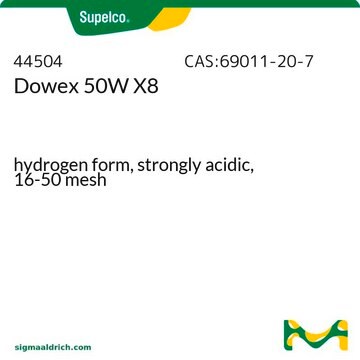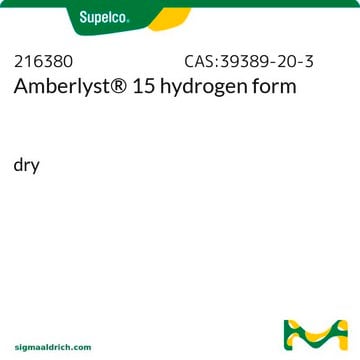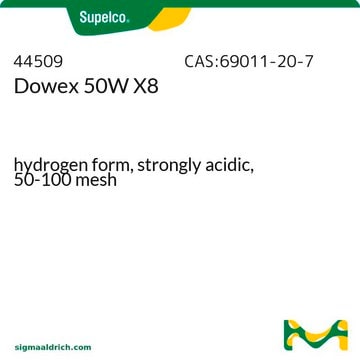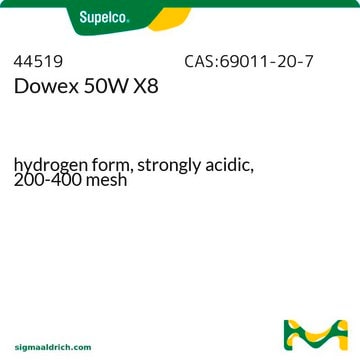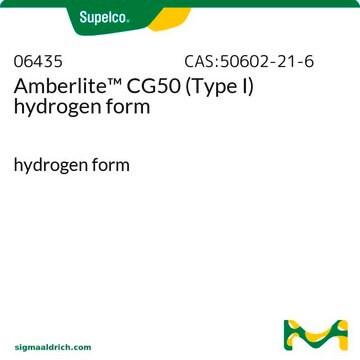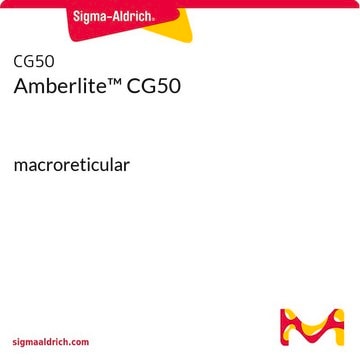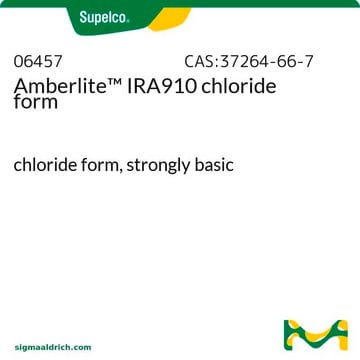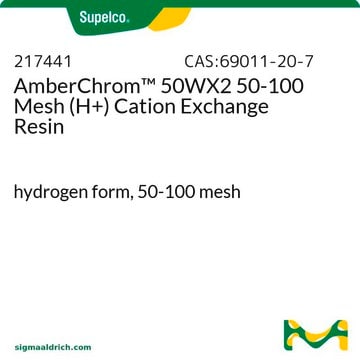This material is a strongly acidic cation exchange resin and stores quite well in the regenerated form. Regeneration should take place with an acid sufficient to inhibit any possible microbial contamination. Following regeneration, rinse with several bed volumes of deionized water prior to storage. Alternatively, a final rinse/storage solution of 20% aqueous ethanol may also be used. Rinse well prior to re-use.
Do not allow the column to dry out. When rehydrated, dry resins are susceptible to bead breakage due to rapid re-swelling. Should drying occur, rehydrate with a saturated NaCl solution. The high osmotic pressure will minimize rapid re-swelling. The salt can then be removed by successive dilutions to prevent a rapid change in osmotic pressure resulting in bead breakage.
